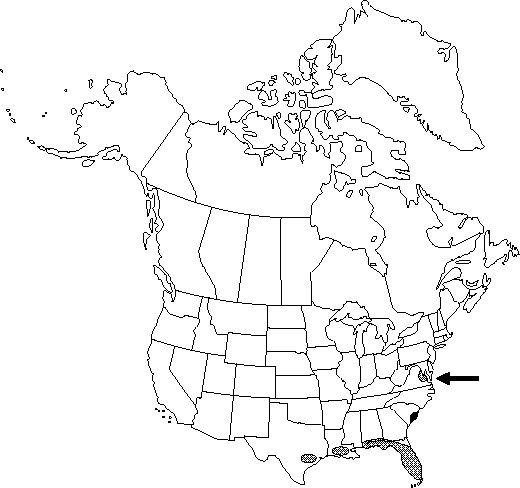Difference between revisions of "Boehmeria nivea"
Voy. Uranie 12: 499. 1830.
FNA>Volume Importer |
GeoffLevin (talk | contribs) m (Restored hyphen in Gaudichaud-Beaupré to match printed version) |
||
| (2 intermediate revisions by one other user not shown) | |||
| Line 1: | Line 1: | ||
{{Treatment/ID | {{Treatment/ID | ||
|accepted_name=Boehmeria nivea | |accepted_name=Boehmeria nivea | ||
| − | |accepted_authority=(Linnaeus) Gaudichaud Beaupré | + | |accepted_authority=(Linnaeus) Gaudichaud-Beaupré |
|publications={{Treatment/Publication | |publications={{Treatment/Publication | ||
|title=Voy. Uranie | |title=Voy. Uranie | ||
| Line 38: | Line 38: | ||
|elevation=0-200 m | |elevation=0-200 m | ||
|distribution=Ala.;Fla.;Ga.;La.;S.C.;Tex.;Va.;Central America;Asia. | |distribution=Ala.;Fla.;Ga.;La.;S.C.;Tex.;Va.;Central America;Asia. | ||
| + | |introduced=true | ||
|discussion=<p><i>Boehmeria nivea</i>, ramie, is an important source of fiber in Asia and was introduced into the United States in 1855 as a commercial crop. The fibers are exceptionally strong but difficult to extract.</p> | |discussion=<p><i>Boehmeria nivea</i>, ramie, is an important source of fiber in Asia and was introduced into the United States in 1855 as a commercial crop. The fibers are exceptionally strong but difficult to extract.</p> | ||
|tables= | |tables= | ||
| Line 47: | Line 48: | ||
-->{{#Taxon: | -->{{#Taxon: | ||
name=Boehmeria nivea | name=Boehmeria nivea | ||
| − | |authority=(Linnaeus) Gaudichaud Beaupré | + | |authority=(Linnaeus) Gaudichaud-Beaupré |
|rank=species | |rank=species | ||
|parent rank=genus | |parent rank=genus | ||
| Line 62: | Line 63: | ||
|publication year=1830 | |publication year=1830 | ||
|special status=Introduced | |special status=Introduced | ||
| − | |source xml=https:// | + | |source xml=https://bitbucket.org/aafc-mbb/fna-data-curation/src/2e0870ddd59836b60bcf96646a41e87ea5a5943a/coarse_grained_fna_xml/V3/V3_453.xml |
|genus=Boehmeria | |genus=Boehmeria | ||
|species=Boehmeria nivea | |species=Boehmeria nivea | ||
Latest revision as of 13:23, 20 January 2022
Shrubs or subshrubs, 2(-3) m. Leaves alternate. Leaf blades broadly ovate to nearly orbiculate, 8-15 × 5-12 cm, abaxial surface densely white-tomentose, adaxial surface slightly scabrous. Inflorescences panicles of moniliform (beaded) clusters, branches not leafy at apex; staminate flowers in proximal leaf axils, pistillate flowers in distil axils. Achenes compressed or lenticular, ovoid or ellipsoid, ca. 1.5 × ca. 0.9 mm, pubescent with straight or slightly curved hairs, uniformly smooth; seeds not conspicuous in outline, corky tissue absent.
Phenology: Flowering late summer–fall.
Habitat: Roadsides, waste places, vacant lots, cultivated fields, along Atlantic and Gulf coastal plains
Elevation: 0-200 m
Distribution

Introduced; Ala., Fla., Ga., La., S.C., Tex., Va., Central America, Asia.
Discussion
Boehmeria nivea, ramie, is an important source of fiber in Asia and was introduced into the United States in 1855 as a commercial crop. The fibers are exceptionally strong but difficult to extract.
Selected References
None.